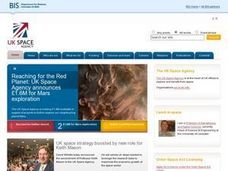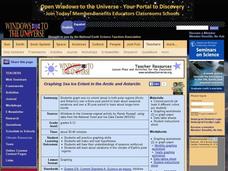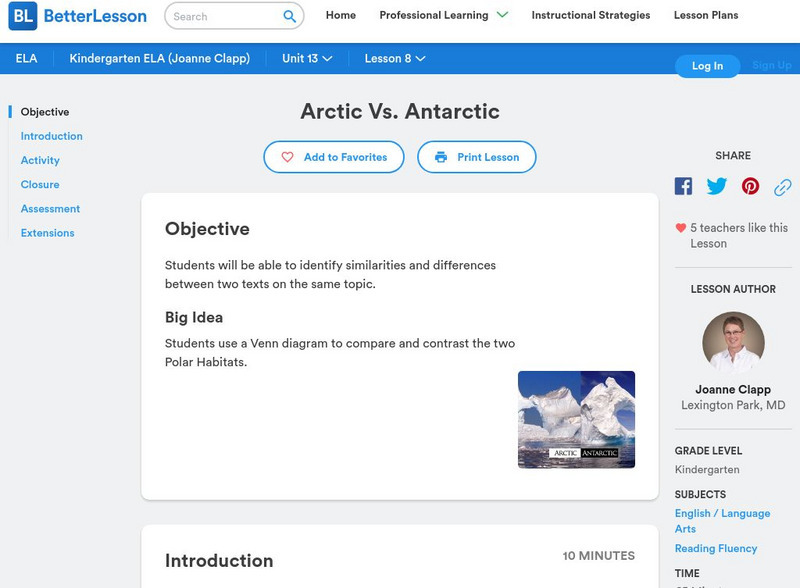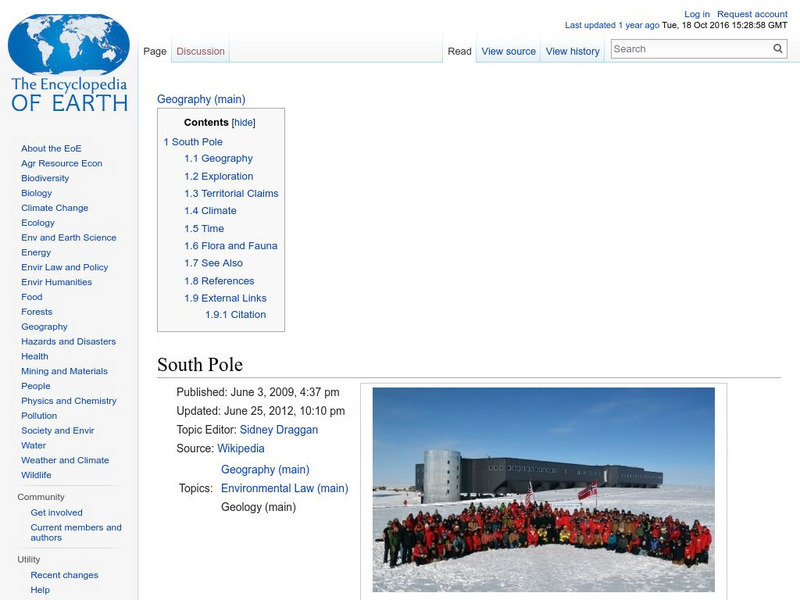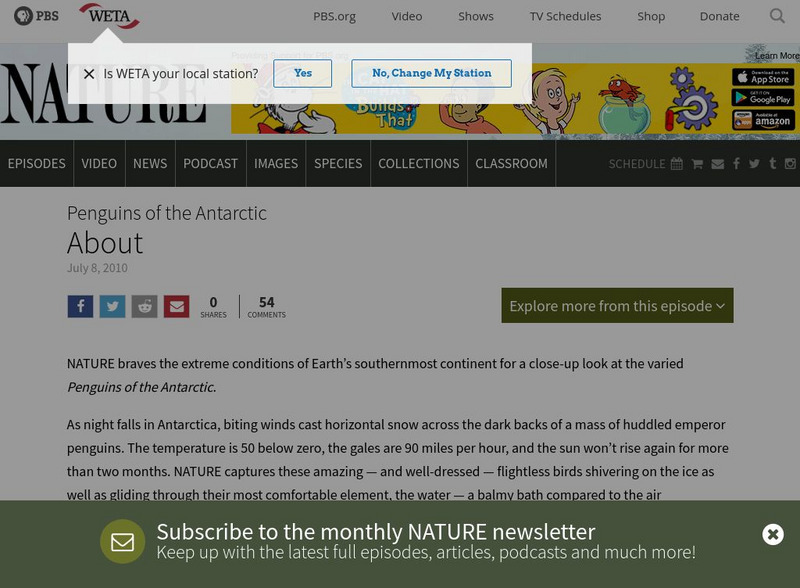Consortium for Ocean Science Exploration and Engagement (COSEE)
Carbon Dioxide & Krill: Impacts
What effects do temperature and carbon dioxide levels have on the zooplankton of Antarctica? This concluding lesson plan in a short unit on climate change and the ocean helps environmental scientists answer these questions. After...
Curated OER
Cryosat Mission
Beginning with general information on satellites and seasons, concluding with polar ice and the Cryosat Mission, this worksheet gives your earth scientists an opportunity to conduct some research. Most of the assignment consists of short...
Curated OER
Graphing Sea Ice Extent in the Arctic and Antarctic
Students graph sea ice data and predict long term trends in the data. In this climate change lesson, students use sea ice data from the Arctic and Antarctic to construct line graphs. They use their graphs to predict the effects of global...
Curated OER
Growing Penguins
Students chart a penguins growth. For this development lesson, students learn basic information about the Antarctic and about Adelie penguins. Students watch a demonstration to see how penguins grow and then work in groups to draw a time...
Curated OER
The Coldest Place at the Bottom of the World
Students examine Ernest Shackleton's journey through the Antarctic and trace Shackleton's Actual Route on a map using longitude and latitude coordinates. Students compare his intended route with his actual and determine how far off...
Curated OER
Arctic Passage
Students plan a survival pack for severe Antarctic weather. They identify items necessary for survival in cold climates and which factors play a parat in keeping warm in the cold.
Curated OER
Arctic vs. Antarctic
Students describe the properties of the Arctic and the Antarctic. They write a report citing the similarities and differences of the two regions. They make a Venn diagram showing what they know about each.
Curated OER
Travel to the Polar Lands
Second graders receive an "Expedition Ticket" to travel through the Polar Regions- the Arctic and the Antarctic. They research polar bears and make drawings that are to scale.
Curated OER
Shackleton's Antarctic Adventure
Students examine the physical changes of freezing water. They locate the continent of Antarctica. They finally describe the characteristics of someone who volunteers.
Curated OER
Artic/Antarctic Animals
Fourth graders create an organized report which includes specific information about their assigned animal. They use the Alpha Smarts program and Microsoft Word to create their reports.
National Science Foundation
National Science Foundation: Arctic & Antarctic
The National Science Foundation has conducted extensive research on this region that is often thought of as barren and devoid of all scientific promise. Learn more about these frigid regions and what is being done to understand more...
Woods Hole Oceanographic Institution
Polar Discovery: Compare the Poles
A detailed comparison of many aspects of the two polar regions. Includes physical features, seasons, weather, types of ice, plants and animals, human population, and climate change.
Ohio State University
Beyond Penguins and Polar Bears
This online magazine for educators is geared to integrate inquiry-based science and literacy focused in the concentrated area of the arctic and antarctic.
Ohio State University
Beyond Penguins and Polar Bears
This online magazine for educators is geared to integrate inquiry-based science and literacy focused in the concentrated area of the arctic and antarctic.
The Association of the British Pharmaceutical Industry
Abpi: Human and Animal Habitats
An interactive learning game where students answer whether or not certain environments would be suitable for different animals. Printable worksheets are available for review at the end of the activity.
Enchanted Learning
Enchanted Learning: Biomes
Discover the hidden treasures in the different habitats on the earth! The earth is filled with many biomes. Examples of different biomes are listed and include hyperlinks to additional information such as the animals found there.
Better Lesson
Better Lesson: Arctic v. Antarctic
Students will be able to identify similarities and differences between two texts on the same topic. After reading and discussing books on the Arctic and Antarctic, they will use a Venn diagram and assorted images to compare and contrast...
Other
Antarctica Online: Life in Antarctica
Explains the history of the U.S. Antarctic Program and describes each of the three stations operated by the United States, of which McMurdo Station is the largest. Following that is a description of how seasons are experienced in the...
National Geographic Kids
National Geographic Kids: Animals: Emperor Penguin
This multi-media site includes video and audio clips about the Emperor Penguin. A great site for research projects, fun facts, maps and more.
Exploratorium
Exploratorium: Ice Stories: Dry Valleys
Learn about the work and research done in Antarctica's most arid regions know as the Dry Valleys.
Encyclopedia of Earth
Encyclopedia of Earth: Geography: South Pole
Information about the Geographic South Pole. Explains how it is defined, the marker (which must be adjusted each year due to ice movements) that identifies its location, and 'other' South Poles, i.e., the Ceremonial South Pole and the...
British Antarctic Survey
British Antarctic Survey: About Antarctica
Official site of the British Antarctic Survey, this page offers info. on various aspects of Antarctica's physical geography, as well as wildlife, weather & other related topics.
Other
Mental Floss: 8 Antarctic Traditions
Every spring in the Antarctica, a new group of workers arrives and stays for a few months. To enliven everyone's stay, some traditions have been put in place. These include a race around the South Pole through all the world's time zones,...
PBS
Pbs: Nature: Penguins of the Antarctic Penguins: Sensitive Indicators
Explore current scientific research on the impact that climate changes are having on the penguins of Antarctica. Gather information regarding penguins, and write a story from a penguin's point of view that describes its daily life.



